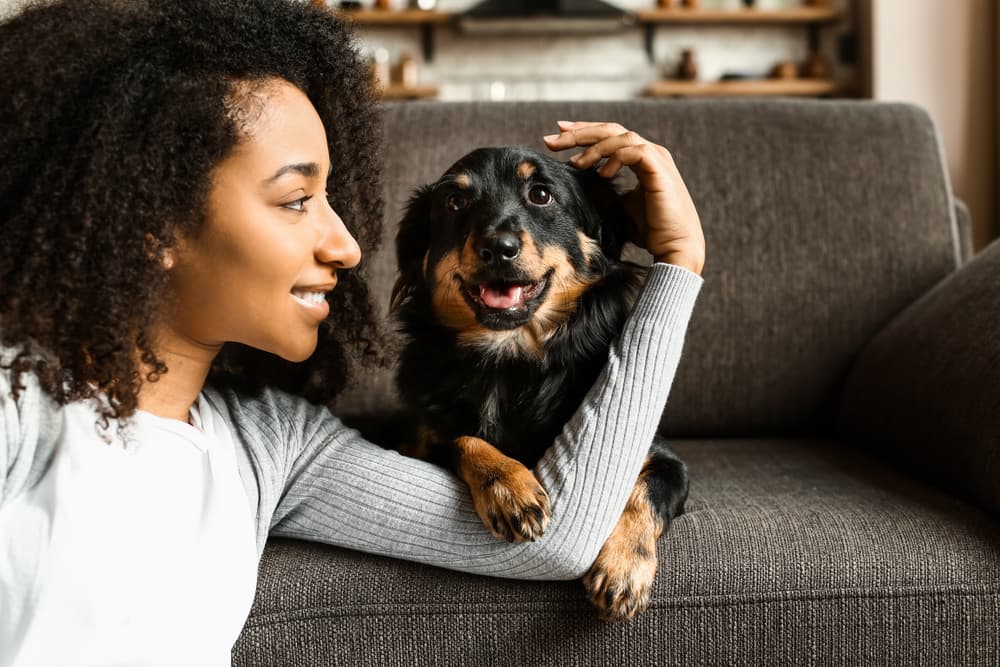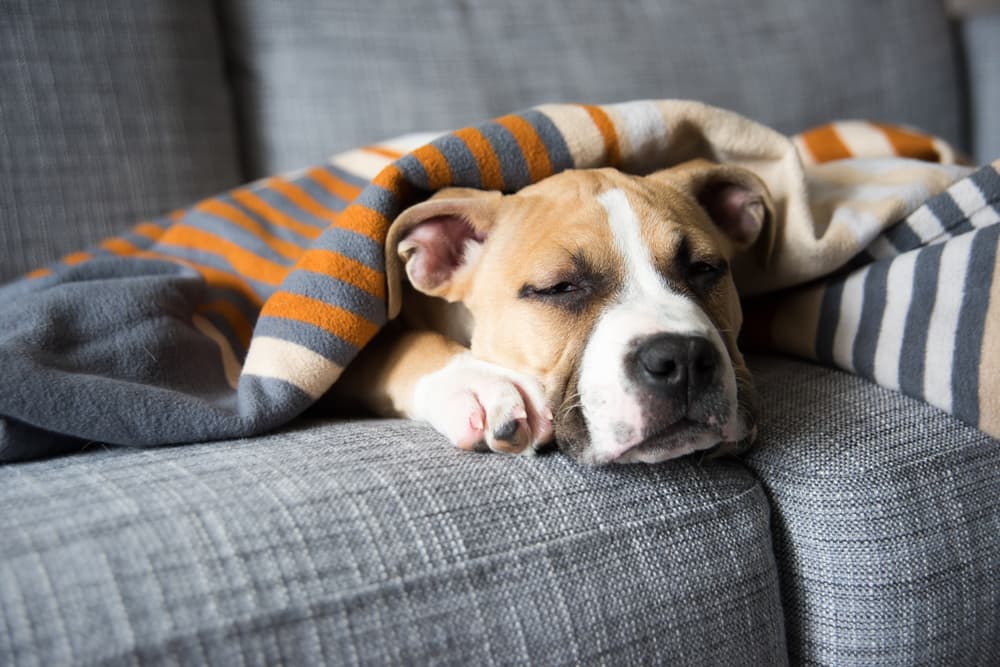TPLO Surgery for Dogs: Costs and What to Expect

Limping in dogs is always a sign of pain. But it can be hard to predict whether that pain will improve after some rest or persist and require intervention. While pet parents often hope for a quick recovery, one common cause of dog limping — a tear in the cranial cruciate ligament (CCL) of a dog’s knee — does require intervention. And, in many cases, veterinarians recommend a Tibial Plateau Leveling Osteotomy procedure, also known as TPLO surgery for dogs.
While the idea of dog surgery may leave some pet parents feeling worried or overwhelmed, the important thing to know is that TPLO surgery is common, has a high success rate, and has returned many dogs to a pain-free active lifestyle.
Here’s a helpful overview of everything you need to know about TPLO surgery, what you can expect if your dog needs this surgical intervention, and some post-op tips to help your dog recover.
What is TPLO Surgery in Dogs?

In dogs, the CCL is equivalent to the anterior cruciate ligament (ACL) in humans. However, whereas humans with a torn ACL might undergo surgery to repair or reconstruct it, dog ACL injuries don’t get the same treatment. CCL repair and reconstruction don’t work for four-legged animals.
Instead, a veterinarian may recommend TPLO surgery for dogs with a torn or injured CCL. In the simplest terms, a dog’s CCL keeps the knee joint (stifle) stable and working properly. When damaged, bending the knee causes a dog’s thigh bone (femur) and shin bone (tibia) to slide painfully out of place. TPLO surgery reconfigures the way a dog’s knee works, stabilizing the bones so that the leg can bend properly and painlessly, even without a CCL.
To accomplish this, a veterinary surgeon changes the angle (level) of the joint surface (tibial plateau) by cutting into the tibia bone (osteotomy) and repositioning the resulting bone segment. This creates a more stable joint by changing the way the quadriceps (thigh) muscle acts on the tibia (shin bone).
Like most surgeries, there are some risks associated with TPLO surgery in dogs. So it is typically recommended for dogs where the potential benefits are greater than the risks. There are several factors veterinary surgeons consider before deciding if a dog is a good candidate for TPLO surgery. These include weight, activity level, and age.
In years past, TPLO was considered a surgery most appropriate for larger dogs (more than 50 pounds). However, smaller dogs (less than 30 pounds) who have undergone the procedure do very well in both the short and long term.
Alternatives to TPLO Surgery in Dogs

Several other surgical procedures can also be used to treat CCL damage. The choice of techniques is based on the surgeon’s preference and experience, as well as the dog’s specific injury.
Other procedures that can be used to treat instability in the knee joint created by a partially or fully torn CCL in dogs include:
- Tibial Tuberosity Advancement (TTA) is a procedure similar to a TPLO, except that a linear cut is made in the tibia to achieve the change in the angle of the quadriceps attachment.
- CORA-Based Leveling Osteotomy (CBLO) is a newer modification of the TPLO procedure that may be appropriate for younger dogs who are still growing.
- Extra-capsular suture stabilization procedures do not involve cutting into the bone. These techniques attempt to stabilize the joint by using heavy nylon or metal suture material to mimic the function of the CCL. This type of surgery may be most appropriate for smaller, older, or less active animals.
- Tightrope CCL surgery is a technique that uses suture stabilization similar to extra-capsular techniques, but drills holes through both the femur and tibia to place the suture in a more anatomic position to achieve stabilization.
While non-surgical solutions, such as pain management, directed activity, physical rehabilitation, and weight management, may help ease the discomfort of CCL injuries in dogs, these tactics do not address the underlying condition. For long-term health and mobility, the sooner surgery is performed, the better the outcome for your pet.
What Does TPLO Surgery for Dogs Involve?

If your dog has a torn CCL and TPLO is merited, here’s what you can expect.
Before TPLO Surgery
First, your veterinarian will want to confirm whether your dog’s limping is due to a CCL tear with a thorough orthopedic exam, which may involve sedation as some of the joint manipulation required may be painful.
The veterinarian will also take X-rays (radiographs) to assess the degree of inflammation inside the joint, confirm there are no other issues involved, and determine the angle of the tibial plateau. This helps the surgeon calculate the measurements needed for surgery, including how much the bone segment needs to be rotated.
Most surgeons require your pet to have recent bloodwork confirming they are healthy enough for anesthesia and medications. Your veterinarian will also want your dog’s skin to be healthy before the procedure because unhealthy skin does not heal well and increases your dog’s risk for surgical infection.
Day of TPLO Surgery
On the day of the procedure, your dog will receive pre-operative pain medication and anesthesia. Your dog’s leg will also be shaved all the way past the hip and down to the ankle before heading into the operating room.
To start, the surgeon will make an incision on the outside of the leg near the knee. Using a small camera or the naked eye, they will inspect the knee joint, removing the meniscus — cartilage within the knee joint — if it is damaged.
The surgeon then moves the tissue and muscles at the top of the tibia out of the way to make a curved cut at the top of the tibia. This segment, the tibial plateau, is then rotated to a position that provides more stability, so the bones don’t slip when the knee is bent. then reattached with a plate and surgical screws.
Finally, the surgeon sutures the muscles back together over the plate and closes the incision with sutures or surgical staples. All of this takes about 1-2 hours for an experienced veterinary surgeon.
After TPLO Surgery
After the surgery is complete, but before the dog emerges from anesthesia, more X-rays are taken to confirm the new joint angle. If the surgeon is not satisfied, they will return to the operating room and alter the angle of the osteotomy segment. Some facilities can perform these X-rays in the operating room before closing the incision.
Benefits of TPLO Surgery for Dogs

Likelihood of success. TPLO surgery for CCL tears in dogs has a very high success rate. According to one study, dogs that underwent the TPLO procedure regained 93 percent of knee function one year after the surgery. (1)
Fast recovery. Compared to other corrective surgeries, TPLO has a speedy recovery rate. Within four months, most dogs can walk and play normally. Within six months, most can resume full activity, even strenuous play.
Reduced risk of arthritis. Researchers studying the long-term impact of TPLO on osteoarthritis in dogs found that dogs treated with TPLO had fewer pain and mobility issues due to osteoarthritis than dogs treated with other surgeries, such as han alternative procedures, like Tibial Tuberosity Advancement (TTA). (2)
Drawbacks of TPLO Surgery for Dogs

Not all dogs are eligible. Some dogs may not be considered good candidates for TPLO surgery due to age, weight, or other health issues. This is why it is so important to discuss your dog’s full medical history with a veterinary surgeon to determine the best way to address your dog’s damaged CCL.
Risk of complications. As with any surgical procedure, TPLO surgery does come with some risks. One study found that 10-34 percent of TPLO procedures report complications. (3) The most common complications are considered minor, such as infection of the incision or post-operative swelling. Though less common, major complications include bone infection (osteomyelitis) which might require removal of the surgical plate and screws.
Re-injury during recovery. It’s crucial to monitor your dog closely after TPLO surgery and follow post-operative instructions to ensure the best chance of recovery. Otherwise, your dog could chew out their sutures because they aren’t wearing a cone or fracture their surgical implant due to exercising too soon.
And even if your dog recovers from TPLO surgery beautifully, it’s important to note that about half of the dogs who tear their CCL in one knee will injure the CCL in the other leg within a few years. So you may not be out of the woods yet.
Dog TPLO Surgery Cost
TPLO is a specialized surgery that should only be performed by board-certified veterinary surgeons. Their training and experience, combined with the cost of the equipment required, means this surgery is a somewhat pricey (yet worthy) investment in your pet’s long-term health.
The average cost for surgery with hospital stay and follow-up visits ranges between $4,000 to $7,000 range. Complications during or after surgery can boost that figure even higher.
And don’t forget about the costs you may incur during your dog’s recovery period. Physical therapy is highly recommended following TPLO surgery and typically costs around $500 to $1,000.
TPLO Surgery Recovery in Dogs

Following TPLO surgery, it may take a few hours for the effects of the anesthesia to wear off. Some dogs spend a night at the animal hospital for monitoring and pain management from veterinary professionals. Once your pet leaves the hospital, their recovery is up to you.
Your pet will be discharged from the hospital wearing an e-collar (also known as the “cone of shame”) to prevent them from licking at the incision as this can lead to infection or opening of the wound.
The veterinarian may also prescribe several types of medications to assist in your dog’s recovery. These will vary, depending on your dog’s overall health, general energy level, and other factors that can impact recovery success. It’s important to give these medications exactly as directed. If for some reason you are unable to give the medication call the veterinarian’s office right away for further instructions.
Keys to TPLO Recovery: Rest, Caution, Patience

Most veterinarians advise 6 to 8 weeks of rest following surgery to give dogs time to heal. Returning to activity too early or without a gradual increase in intensity could undo the benefit of TPLO surgery and put you back at square one.
Your veterinarian will monitor your dog’s progress and provide a plan for resuming certain activities, as well as physical rehabilitation with a veterinary PT specialist, when they deem your dog ready.
This may take some time, so be prepared to keep a close watch on your healing pup. It’s very likely your dog will think they’re ready for more activity before the veterinarian OKs it.
If, despite your best efforts, your dog jumps up onto the couch instead of waiting to be lifted or lunges after a squirrel, don’t despair. Accidents happen. But do call your veterinarian or surgeon for help determining what impact this might have on the healing process.
They may recommend X-rays to make sure the bone and implant are where they should be. Or they may prescribe sedatives to help keep your dog subdued so they can heal properly.
Repeat infractions, such as running, jumping, or other strenuous activities will disrupt healing and could lead to TPLO failure. So keep an eye out for symptoms that recovery is not going according to plan. These include worsening limp, lethargy, swelling of the knee, and discharge from the incision site.
However, if you (and your pup!) stick closely to your veterinarian’s proscribed recovery plan, your pet should be able to return to normal activity within about 6 months.
How to Care for Your Dog After TPLO Surgery

To give your dog the best chance for a full recovery, here are some tips for success:
- Remember: Follow-care is as important as the surgery itself. Adhere closely to the post-op instructions about activity restriction, pain management, and follow-up appointments.
- Stay in close communication with your veterinarian and surgeon to resolve questions or complications as they arise. You can always email pictures or videos of your dog’s incision or leave voicemails to make sure recovery is going smoothly.
- Don’t overlook the importance of physical rehabilitation, which has been proven to improve recovery and restoration of mobility. Yes, it’s another expense. But it’s pointless to invest in the surgery and then skimp on recovery. Plus, physical rehabilitation is becoming more available at both specialty and primary veterinary clinics.
- Gradual return to activity means just that. Slowly add exercise back into your dog’s routine, under the advice of your veterinarian or surgeon. As your dog progresses, keep in mind that swimming, or even walking in shallow water, can be a great low-impact exercise. But be sure to clear it with your vet or surgeon, first.
- Not only do overweight dogs face an increased risk of CCL injuries, but those extra pounds also make healing from TPLO surgery more difficult because of the strain they put on the joint as it heals. Anything you can do to help your dog maintain a healthy weight during recovery helps improve their long-term health and mobility.









